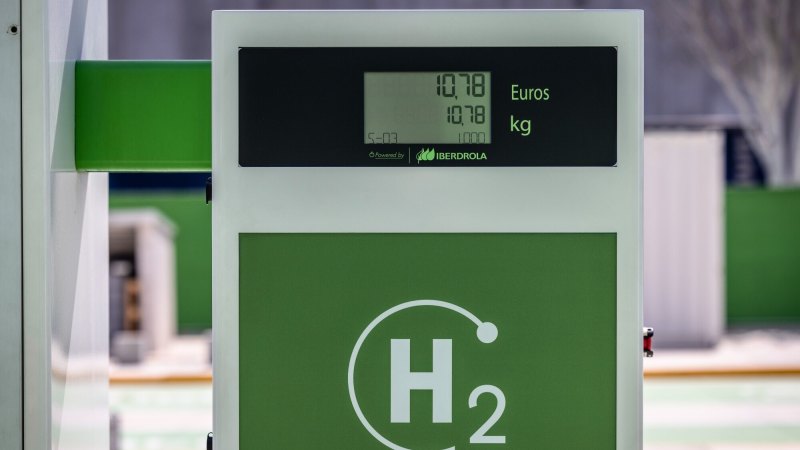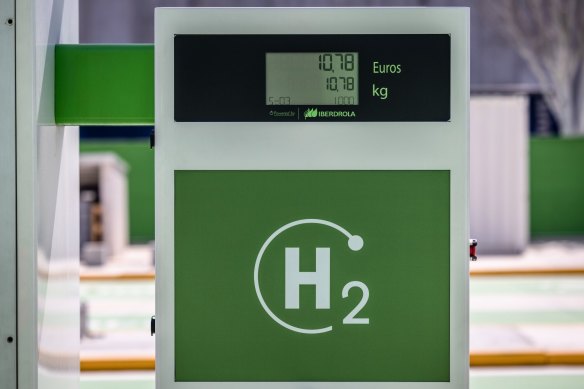Save articles for later
Add articles to your saved list and come back to them any time.
Investors managing trillions of dollars say Australia needs a more ambitious climate target to compete with other nations for global capital flowing into the green industry revolution.
The government is set to release a response to the United States’ $550 billion green industry stimulus scheme by the end of the year.
A pump at a green hydrogen refuelling station.Credit: Bloomberg
The giant US fund, which Australia cannot match, is already sucking in capital from around the world, including from local industry mogul Andrew Forrest, who says he would rather develop hydrogen production projects in Australia but cannot ignore the financial benefits on offer in the US.
Investor Group on Climate Change, representing institutional investors with total funds under management of more than $30 trillion, said Australia can attract a hefty portion of global green investment without splashing cash to compete with the US financial sweeteners.
However, Australia will need to ramp up its climate targets, which must be updated when Australia attends the United Nations’ global climate conference in 2025, and deliver a comprehensive suite of plans on how it will to work with industry sectors to cut emissions – particularly farming, building, manufacturing and mining where green technology is not as advanced as renewables are for the energy sector.
The Investor Group on Climate Change said Australia must demonstrate it is helping to tackle the growing financial damages wrought by global warming by upping its emissions reduction goals to be consistent with action needed to limit global warming to 1.5 degrees.
Australia committed under the Paris Agreement to action that was consistent with international efforts to limit global warming to less than 2 degrees and as close to 1.5 as possible. This target was scientifically selected as the threshold above which global warming will cause the most costly damage – from more intense and frequent floods and fires and other extreme weather events to habitat loss and reduced availability of food and drinking water.
The Albanese government has pledged to cut emissions 43 per cent by 2030 and reach net-zero by 2030 – consistent with global action that would deliver 2 degrees or more of warming.
Investor Group on Climate Change policy director Erwin Jackson said there was ample capital waiting to be invested, but to compete on an even footing Australia had to match countries that had more ambitious targets – including economic powerhouses like the UK, US and the European Union.
“Investors globally support policy to deliver 1.5 degrees because it delivers the best outcomes for superannuation savings,” Jackson said.
“The higher the temperature goes, the worse the financial damage will be under climate change. Investors want to help create a safer economic future, and they are looking for all governments globally to commit to these targets.”
The Investor Group on Climate Change on Thursday released a discussion paper that said investors were willing and able to bankroll the economy’s decarbonisation, but they need plans that deliver clear, stable and long-term policies that map out how government will work with industries, such as government standards for energy-efficient buildings.
Chief investment officer for the $70 billion pension fund Cbus Super Brett Chatfield said his company wanted to support the transition to a green economy, and these plans help them identify the industries “that are both key to Australia’s transition and important to our members”.
Get to the heart of what’s happening with climate change and the environment. Sign up for our fortnightly Environment newsletter.
Most Viewed in Politics
From our partners
Source: Read Full Article

